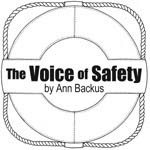Alcohol Impairment Jeopardizes
“All Hands”
by Ann Backus, MS

Ann Backus, MS is an Instructor in Occupational Health at Harvard School of Public Health, 665 Huntington Ave., Boston MA 02115, 617/432-3327, abackus@hohp.harvard.edu
The designated driver concept was created to help ensue that within any partying or bar-hopping group there would be one person who could drive unimpaired. The success of this program is controversial, yet for a variety of reasons the number of fatal car accidents attributed to alcohol-impaired driving dropped 9% from 2007 to 2008. Nonetheless, roughly a third (32%) of the total car accident deaths in 2008 were alcohol-related. This average is generally upheld across the states: Maine – 28%, New Hampshire – 32%, Massachusetts –34%, and Rhode Island – 38% (http:// www.edgarsnyder.com/drunk-driving/ statistics.html).
A fishing vessel is not a car but rather, a work site, often with heavy machinery and certainly with hazards that can compound quickly once the dominoes start to fall. At a work site there should be zero tolerance for alcohol or drug intoxication. The crew should either be at work fishing or at the ready at all times to respond to developing situations. The fishing work site is isolated from 911, fire, police, and ambulances. Mayday calls have a response time related to the nearest willing Good Samaritan vessel and crew. This means that the fishing crew needs to be their own first responders.
A crew that has even one alcohol or drug impaired member will have a serious problem in the event of an emergency. That member may not be able to help the team or himself; he actually may put both himself and others at risk. He may not be able to get into or zip up his immersion suit, understand emergency directions, swim to or enter a life raft. The work site ceases to be an environment with “all hands on deck.”
Coast Guard Section Northern New England recently issued a press release stating that, “Vessel Masters and crew members have the responsibility to operate in a safe manner. Federal law makes it illegal for ANY crew member of a commercial vessel, including commercial fishing vessels, to be under the influence of drugs or alcohol. The blood alcohol content (BAC) limit that applies to all crew members on a commercial vessel is 0.04%. Marine employers and vessel Masters who permit crew members to be under the influence of drugs or alcohol while working on their vessels can be held civilly liable under federal law.”
Note that Operating Under the Influence (OUI) on a fishing vessel applies to all hands, not just the “driver” of the vessel, again reinforcing the idea that fishing vessels are considered work sites, not cars. Reaching the 0.04% BAC is surprisingly easy. Almost anyone over 130 pounds can reach this level after one drink of 12 ounces of beer, 4 ounces of wine, or 1-1/4 ounces of 80-proof hard liquor (www.ohsinc.com). At the 0.04% BAC level, coordination is impaired as are judgment and thinking. Moreover, research on pilots has found that the hangover period that follows drinking of three or four drinks (to the level of 0.10% BAC) can range from 8 to 14 hours. Thus crew members indulging in drinking on board or in port and returning to the vessel can be impaired through a good part of the next day.
In the marine environment, an additional risk factor for fatality is hypothermia. This risk is greatly increased by the consumption of alcohol. A crew member’s risk of frostbite and death increases substantially if he is impaired while working on a wet, cold deck or while trying to survive a period of time in an immersion suit or life raft.
Civil penalty proceedings may be initiated against impaired crew, fines up to $7,000 can be imposed, and the Coast Guard could terminate the trip. In the spirit of mutual assistance that characterizes the fishing cultures, crew members should help fellow crew keep a safe distance from alcohol impairment to ensure that “all hands” are safe and available to assist in an emergency on their vessel or another’s.
